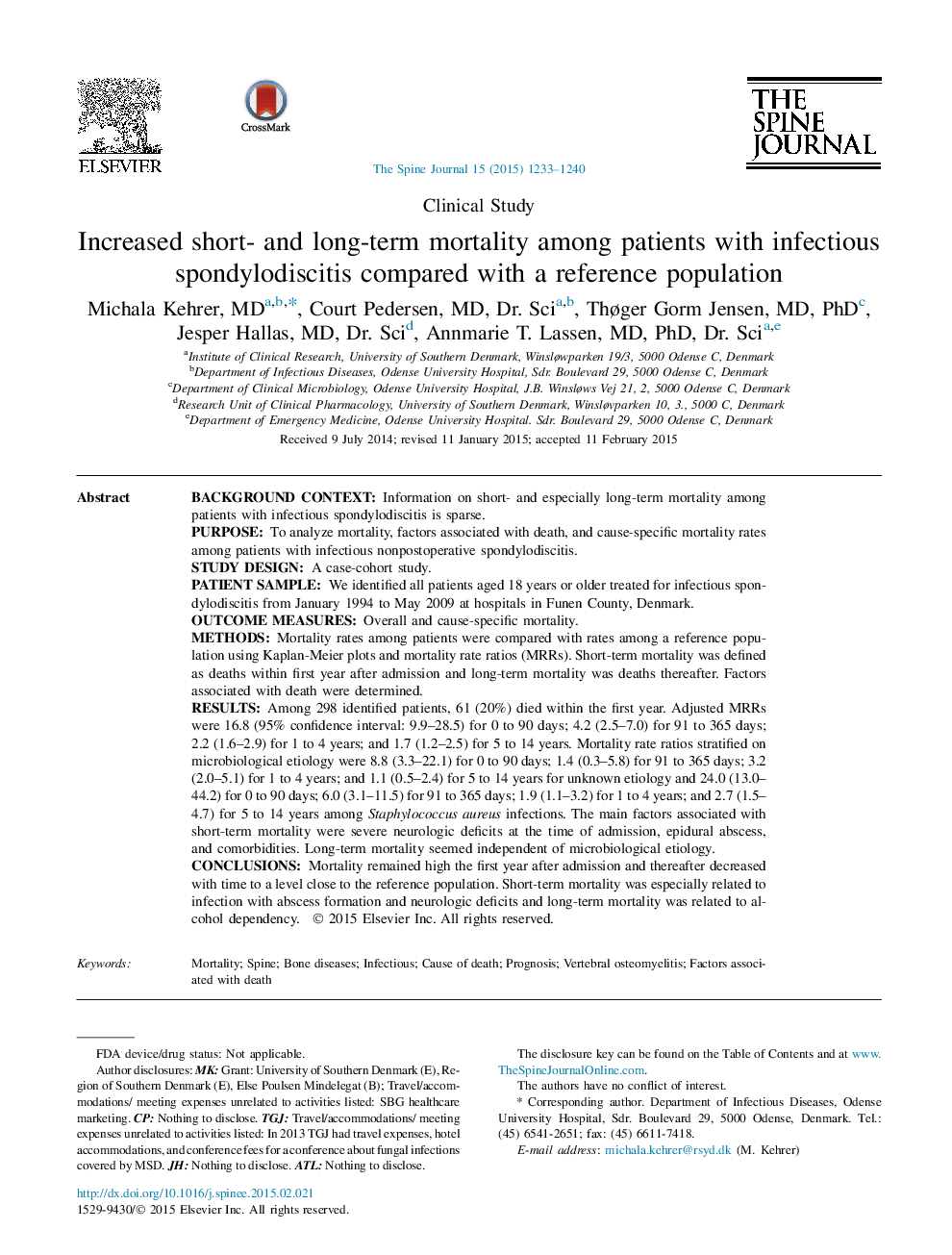| کد مقاله | کد نشریه | سال انتشار | مقاله انگلیسی | نسخه تمام متن |
|---|---|---|---|---|
| 6211888 | 1268561 | 2015 | 8 صفحه PDF | دانلود رایگان |

Background contextInformation on short- and especially long-term mortality among patients with infectious spondylodiscitis is sparse.PurposeTo analyze mortality, factors associated with death, and cause-specific mortality rates among patients with infectious nonpostoperative spondylodiscitis.Study designA case-cohort study.Patient sampleWe identified all patients aged 18 years or older treated for infectious spondylodiscitis from January 1994 to May 2009 at hospitals in Funen County, Denmark.Outcome measuresOverall and cause-specific mortality.MethodsMortality rates among patients were compared with rates among a reference population using Kaplan-Meier plots and mortality rate ratios (MRRs). Short-term mortality was defined as deaths within first year after admission and long-term mortality was deaths thereafter. Factors associated with death were determined.ResultsAmong 298 identified patients, 61 (20%) died within the first year. Adjusted MRRs were 16.8 (95% confidence interval: 9.9-28.5) for 0 to 90 days; 4.2 (2.5-7.0) for 91 to 365 days; 2.2 (1.6-2.9) for 1 to 4 years; and 1.7 (1.2-2.5) for 5 to 14 years. Mortality rate ratios stratified on microbiological etiology were 8.8 (3.3-22.1) for 0 to 90 days; 1.4 (0.3-5.8) for 91 to 365 days; 3.2 (2.0-5.1) for 1 to 4 years; and 1.1 (0.5-2.4) for 5 to 14 years for unknown etiology and 24.0 (13.0-44.2) for 0 to 90 days; 6.0 (3.1-11.5) for 91 to 365 days; 1.9 (1.1-3.2) for 1 to 4 years; and 2.7 (1.5-4.7) for 5 to 14 years among Staphylococcus aureus infections. The main factors associated with short-term mortality were severe neurologic deficits at the time of admission, epidural abscess, and comorbidities. Long-term mortality seemed independent of microbiological etiology.ConclusionsMortality remained high the first year after admission and thereafter decreased with time to a level close to the reference population. Short-term mortality was especially related to infection with abscess formation and neurologic deficits and long-term mortality was related to alcohol dependency.
Journal: The Spine Journal - Volume 15, Issue 6, 1 June 2015, Pages 1233-1240